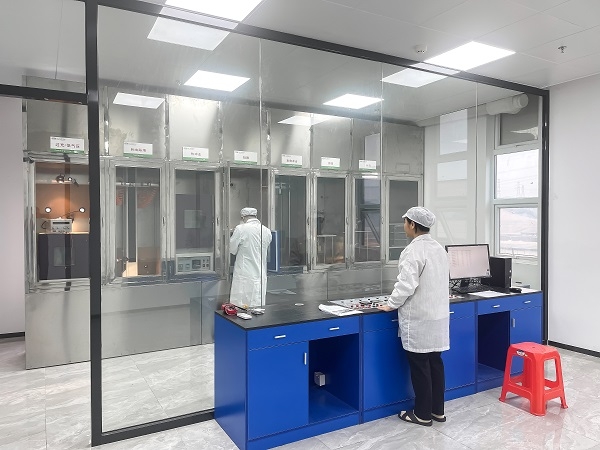Lithium battery is a product that requires high quality and high safety. Consumers often do not know the performance of the battery when using it, so the working efficiency of the battery often does not reach the ideal target during use, and sometimes even blind use can cause battery explosions. So understanding the performance of the battery is also crucial.

The performance test of Polymer Lithium-ion battery mainly includes voltage, internal resistance, capacity, internal pressure, self-discharge rate, cycle life, sealing performance, safety performance, storage performance, appearance, etc. Others include overcharge, overdischarge, weldability, corrosion resistance sex, etc
Method / step
1. Self-discharge test
The self-discharge test of lithium-ion battery is: generally use 24-hour self-discharge to quickly test its charge retention capability, discharge the battery to 3.0V at 0.2C, charge to 4.2V at constant current and constant voltage 1C, cut-off current: 10mA, set aside After 15 minutes, discharge the battery at 1C to 3.0V to measure its discharge capacity C1, then charge the battery with constant current and constant voltage 1C to 4.2V, the cut-off current is 100mA, and measure the 1C capacity C2 after leaving it for 24 hours, C2/C1×100% should be greater than 99%.
2. Internal resistance measurement
The internal resistance of the battery refers to the resistance of the current flowing through the battery when the battery is working, which is generally divided into AC internal resistance and DC internal resistance, resulting in polarization internal resistance, so its true value cannot be measured; and measuring its AC internal resistance can avoid the influence of polarization internal resistance, and obtain the true internal value.
The AC internal resistance test method is as follows: using the feature that the battery is equivalent to an active resistance, a constant current of 1000HZ, 50mA is given to the battery, and a series of processes such as voltage sampling, rectification and filtering are performed to accurately measure its resistance.
3. IEC standard cycle life test
IEC stipulates that the standard cycle life test of lithium batteries is:
After the battery is discharged to 3.0V at 0.2C, the battery is charged to 4.2V at 1C with constant current and constant voltage, and the cut-off current is 20MA. After standing for 1 hour, the battery is discharged at 0.2C to 3.0V (one cycle) for 500 cycles. Above 60% of the initial capacity.
4. Internal pressure test
Lithium battery internal pressure test is: (UL standard)
The simulated battery is at an altitude of 15240m (low pressure 11.6kPa) to check whether the battery leaks or bulges.
Specific steps: Charge the battery to 4.2V with 1C constant current and constant voltage, cut-off current is 10mA, then put it in a low pressure box with an air pressure of 11.6Kpa and a temperature of (20±3℃) for 6 hours, the battery will not explode , fire, crack, leak.
5. Drop test
After the battery pack is fully charged, drop it on the hard rubber plate from a height of 1.2m from three different directions, and do it twice in each direction. The battery pack should have normal electrical performance and no damage to the outer packaging.
6. Vibration experiment test
The vibration experiment method of lithium battery is as follows:
The battery is discharged at 0.2C to 3.0V, then charged at 1C with constant current and constant voltage to 4.2V, and the cut-off current is 10mA. After 24 hours of storage, vibrate according to the following conditions:
Amplitude 0.8mm
Make the battery vibrate between 10HZ-55HZ, increasing or decreasing at a vibration rate of 1HZ per minute.
After vibration, the battery voltage change should be within ±0.02V, and the internal resistance change should be within 5m.
7. Impact test
After the battery is fully charged, place a 15.8mm diameter hard bar on the battery, and drop a 20-pound weight from a height of 610mm on the hard bar. The battery should not explode, catch fire or leak.
8. Puncture experiment
After the battery is fully charged, use a 2.0mm~25mm diameter nail through the center of the battery and leave the nail inside the battery, the battery should not explode and catch fire.
9. High temperature and high humidity test
The lithium battery high temperature and high humidity test is:
Charge the battery with 1C constant current and constant voltage to 4.2V, cut-off current is 10mA, and then put it in a constant temperature and humidity box with a relative humidity of 90%-95% for 48h at (40±2℃), then take out the battery in (20°C). Under the condition of ±5℃) for 2h, there should be no abnormality in the appearance of the battery, and then discharge at 1C constant current to 2.75V, and then under the condition of (20±5℃), carry out 1C charge, 1C discharge cycle until the discharge capacity Not less than 85% of the initial capacity, but not more than 3 cycles.
Precautions
Test time on hold for 24 hours
Test security measures to do well
Cycle test no more than three times



